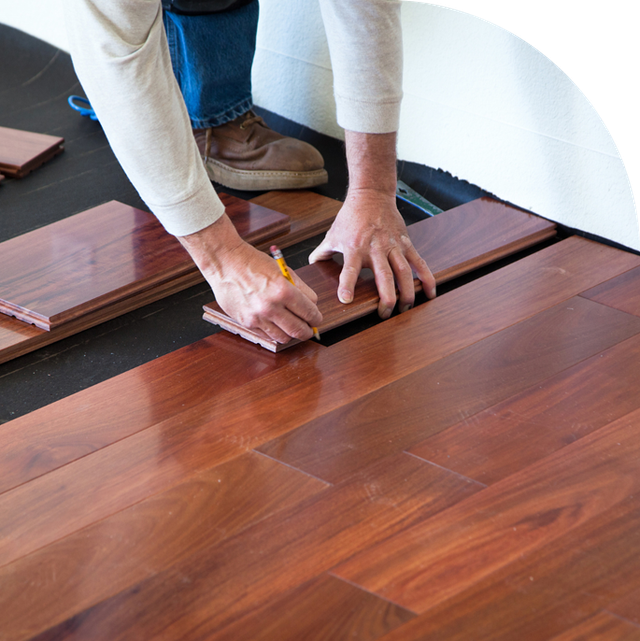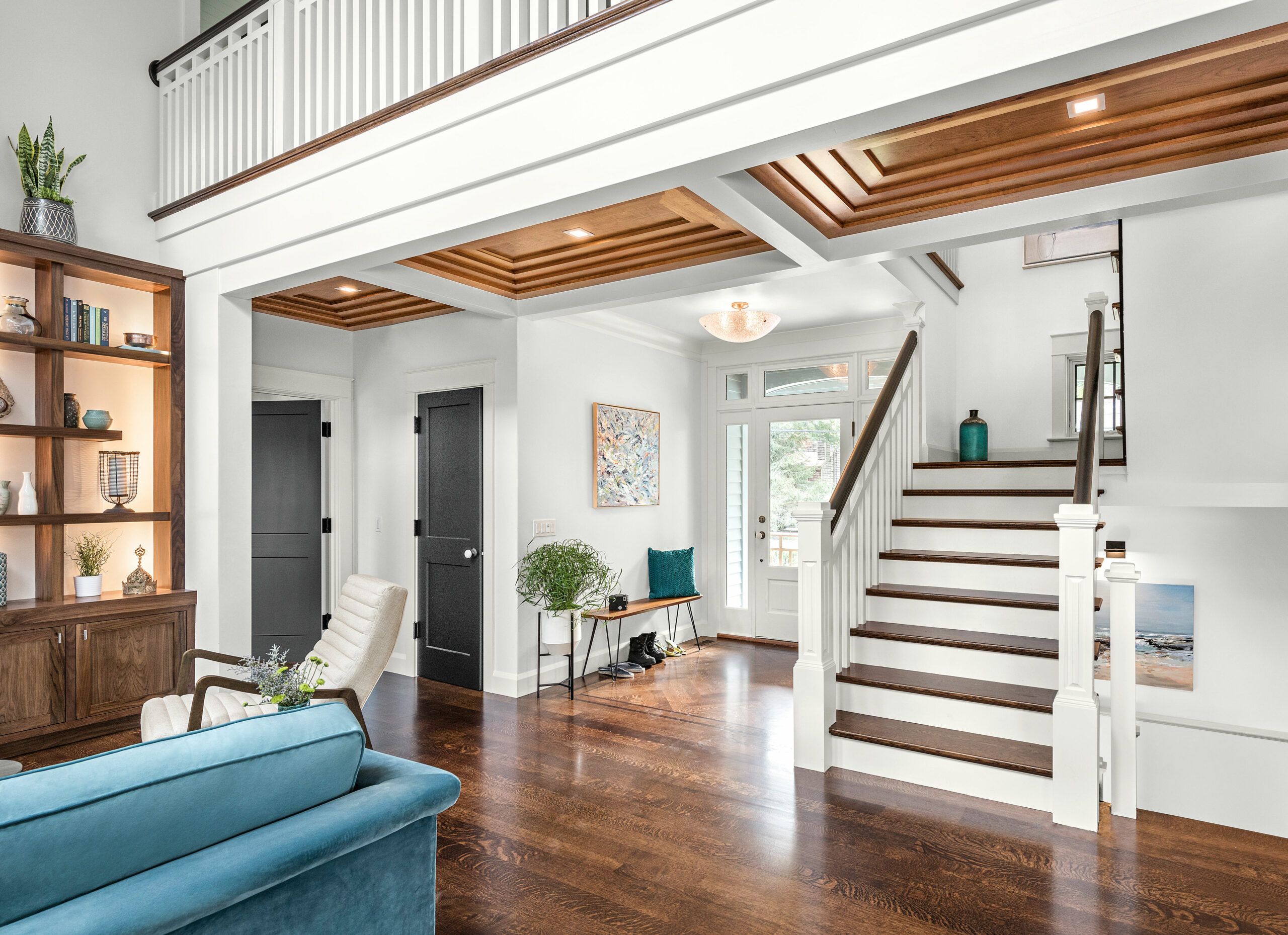The Benefits and Drawbacks of Installing Wood Floor Covering in Your Living Spaces
When considering the installment of wood flooring in your living areas, it's important to consider both its advantages and downsides. This kind of floor covering offers exceptional visual charm and can dramatically enhance residential or commercial property value, many thanks to its timeless style and compatibility with different interior styles. Understanding these variables is critical before making an informed choice on whether wood flooring is the right option for your home.
Aesthetic Allure
Hardwood flooring is commonly celebrated for its aesthetic appeal, frequently thought about a timeless option that enhances the aesthetic sophistication of any type of interior space. The natural appeal and heat of wood can elevate the general ambiance, making it an attractive alternative for designers and house owners alike. Its versatile nature permits it to effortlessly mix with different building designs, from traditional and conventional to modern and contemporary.
The variety of timber finishes, spots, and varieties available offers enough modification possibilities. Alternatives such as oak, maple, cherry, and walnut each deal distinct grain patterns and colors, providing to diverse design choices. Moreover, the capacity to pick in between various slab sizes and installment patterns, such as herringbone or diagonal layouts, contributes to the design versatility.
One more significant benefit is hardwood's capability to age with dignity. With time, it can create a rich patina that adds character and beauty to the room. This aging process typically enhances its allure, making it a sought-after attribute in both brand-new building and constructions and remodelling jobs. Fundamentally, wood floor covering not just adds to a prompt visual effect yet likewise remains to provide aesthetic benefits as it develops.

Longevity and Durability
In enhancement to its impressive aesthetic allure, the long-lasting nature of hardwood flooring is an additional compelling reason for its extensive popularity. Renowned for its robustness, hardwood flooring can withstand substantial foot web traffic and keep its architectural honesty for decades. Unlike various other floor covering alternatives that might break down or show indications of wear relatively quickly, hardwood has an inherent toughness that makes it particularly resistant.
One of the key qualities adding to the long life of wood flooring is its resistance to everyday damage. Premium hardwood varieties, such as oak, maple, and cherry, offer remarkable toughness, making them suitable for high-traffic areas within a home. The capability to sand and refinish wood floorings expands their life-span substantially. This process can be repeated numerous times, effectively revitalizing the surface and resolving any type of superficial damage that may have occurred over the years.
Additionally, hardwood flooring has a tendency to age gracefully, creating an abundant patina that enhances its personality with time. This aging process not just contributes to its charm but additionally confirms to its long-term nature. Spending in wood flooring is typically seen as a lasting dedication that can add value to a residential or commercial property while offering long-lasting appeal and performance.
Maintenance Needs
Keeping wood flooring, while typically straightforward, requires a regular and thoughtful strategy to preserve its style and durability. Regular maintenance includes sweeping or vacuuming to remove dust and particles that can trigger scrapes. It's suggested to use a soft-bristled mop or a vacuum cleaner without a beater bar to reduce possible damages.
Spills ought to be dealt with without delay to avoid dampness from permeating into the timber and creating bending or discoloration. Using a wet, not wet, wipe for cleaning is crucial, as excessive Related Site water can be destructive. Using a wood flooring cleaner especially made for timber surfaces can improve the floor's all-natural luster without leaving residue.
Regular refinishing is an additional important facet of upkeep. In time, the coating can use down, leaving the timber vulnerable to damages. Refinishing involves sanding down the leading layer and using a new coat of finish, which can recover the flooring's appearance and extend its lifespan.
Protective procedures, such as making use of furnishings pads and putting rugs in high-traffic locations, can reduce deterioration. Additionally, keeping secure indoor moisture degrees helps avoid timber from increasing or acquiring exceedingly. Sticking to these maintenance practices makes sure that wood floor covering continues to be a ageless and resilient choice for living rooms.
Price Considerations
When evaluating the price factors to consider of installing wood floor covering, it is important to account for both preliminary expenditures and long-lasting financial implications. The preliminary expense for hardwood flooring can be considerable, especially when picking premium lumber or unique types.
Nonetheless, wood flooring uses favorable long-lasting financial advantages that may offset the initial investment. One of the main advantages is the resilience and durability of hardwood floors. Appropriately kept wood can last for years, reducing the demand for regular substitutes compared to other floor covering options. In addition, hardwood floors can boost property value, making a home much more appealing to prospective purchasers and potentially enhancing resale worth.
Additionally, wood flooring is relatively simple to repair (refinishing hardwood floors). Individual planks can be sanded and redecorated numerous times, which can prolong the life of the floor covering and decrease lasting upkeep expenses. Hence, while the in advance prices can be high, the enduring value and longevity often make hardwood a financially audio investment with time
Dampness Vulnerability
While wood floor covering offers significant financial advantages, it is essential to consider its vulnerability to moisture-related issues. Hardwood, being an all-natural material, is vulnerable to increasing you could try here and getting based upon the humidity levels in the atmosphere. Excessive moisture can cause the timber to swell, warp, and even create mold, therefore endangering both its aesthetic allure and architectural integrity.
In rooms like shower rooms, kitchen areas, or basements where moisture levels are generally greater, wood flooring might not be the most sensible option. Also small spills, otherwise promptly cleaned, can seep right into the joints and create long-term damages. Seasonal changes can additionally impact wood, resulting in spaces during dry durations and more distorting when humidity rises.
To alleviate these risks, house owners can consider crafted hardwood, which supplies better resistance to wetness because of its multi-layer construction. Furthermore, preserving a constant indoor climate with the help of humidifiers or dehumidifiers can help protect the condition of hardwood floorings. Securing the surface area with protective surfaces likewise supplies an additional layer of protection versus wetness seepage.
Comprehending the potential for moisture-related troubles is vital in making an educated decision about hardwood floor covering. Appropriate care and preventative actions can dramatically enhance its longevity and performance in living areas.

Final Thought
In conclusion, mounting hardwood floor covering in living areas presents a mix of advantages and difficulties. Despite these downsides, the financial investment in hardwood floor covering frequently pays dividends in both functionality and property worth, making it a prominent selection for critical homeowners.
When considering the installment of wood floor covering in your living spaces, it's important to weigh both its downsides and advantages.Hardwood flooring is commonly celebrated for its visual charm, frequently taken into consideration a classic choice that boosts the visual style of any kind of interior room. Sticking to these upkeep methods makes sure that wood flooring continues to be a classic and resilient choice for living spaces.
In final thought, mounting hardwood floor covering in living rooms presents a mix of obstacles and advantages. Regardless of these downsides, the financial investment in hardwood floor covering commonly pays returns in both capability and building value, making it a preferred selection for discerning house owners.